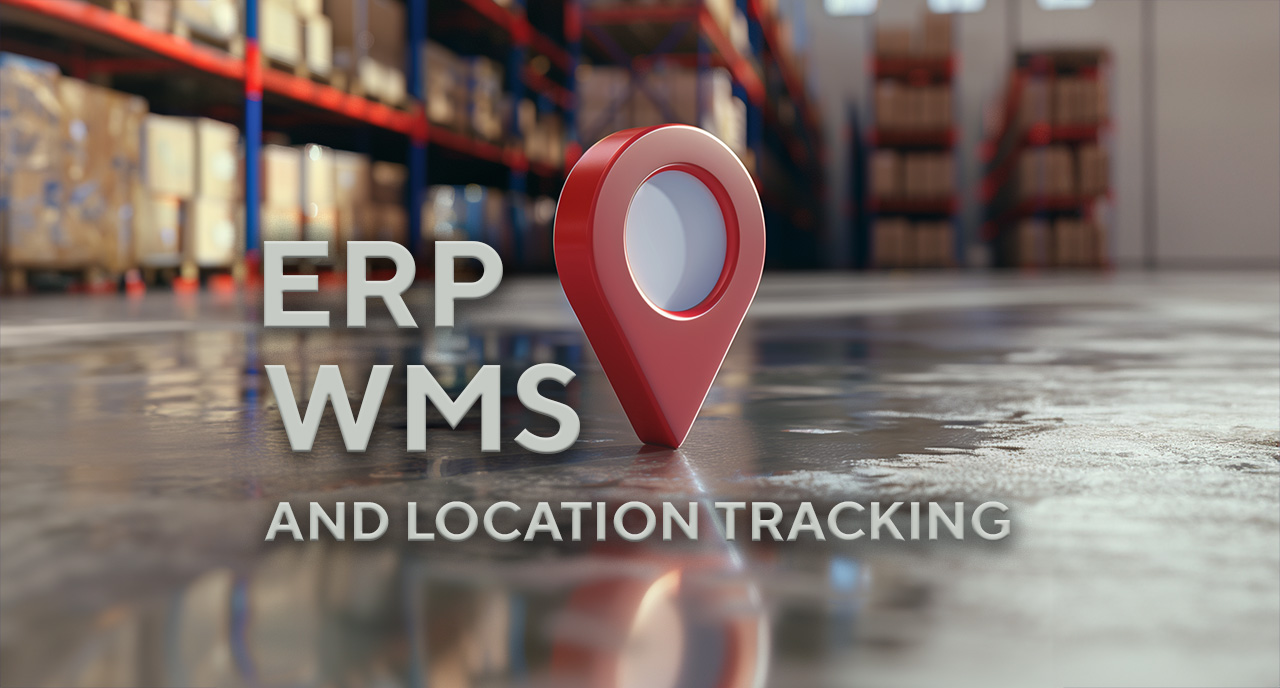The Advantages of Real-Time Location Tracking in ERP vs WMS Systems
Introduction
Businesses that heavily depend on managing resources and inventory need to do it efficiently to stay competitive. Integrating real-time inventory tracking into ERP (Enterprise Resource Planning) or WMS (Warehouse Management Systems) can significantly improve operational efficiency and accuracy.
In this post we'll cover:
- Understanding ERP and WMS systems
- WMS vs ERP
- The importance of Real-Time Location Tracking
- Benefits of Real-Time Location Tracking in ERP
- Benefits of Real-Time Location Tracking in WMS
- Integrating Real-Time Location Tracking into an ERP or WMS
- Key takeaways
Before we delve into the advantages of real-time location tracking, let's clarify the differences between an ERP and a WMS. Understanding these distinctions is important when discussing your options with software providers.
Understanding ERP and WMS systems
Both WMS and ERP software systems are core components of any distribution business.
Enterprise Resource Planning (ERP) integrates business processes, such as finance, human resources, supply chain, and customer relationship management. They provide a centralized platform for data management and facilitate communication across various departments within an organization.
The main purpose of ERP software is to facilitate the flow of information between all areas of a business. Some capabilities can overlap with WMS software.
For instance, an ERP can generate detailed reports and analytics on inventory movements. An WMS offers additional data such as popularity of items and order processing times. This way, businesses can make informed decisions on warehouse layout and operations.
Warehouse Management Systems (WMS) are more specialized software solutions, focused on optimizing warehouse operations. They manage tasks such as inventory tracking, order fulfillment, picking, packing, and shipping within a warehouse or distribution center. WMS systems provide visibility into inventory levels and movement, increasing efficiency in warehouse management.
This technology can also provide inventory count, stocking location priorities, and highly precise tracking of items.
WMS are, however, solely deployed in warehouse operations and lack information on the other aspects of a business.
WMS vs ERP: Which is right for your business?
Choosing WMS over ERP or the combination of both will depend on the particular needs and goals of your business.
While ERP solutions offer broader functionality by integrating multiple business processes, WMS systems provide specialized features tailored specifically for warehouse management.
Often, businesses choose an integrated approach, combining an ERP system with WMS modules to meet specific warehouse management needs. This integrated setup allows for seamless data flow and collaboration between different departments, ensuring optimal resource management and operational efficiency.
The importance of Real-Time Location Tracking
In traditional warehouse operations, employees typically track inventory and goods manually or by using barcode scanning. However, this method is prone to errors and may lead to differences between digital records and actual inventory positions. This phenomenon is "virtual-physical mismatch."

Real-time location tracking technology deletes the need for manual data entry and offers immediate visibility into the locations of inventory within the warehouse. Technologies like RFID (Radio Frequency Identification) or indoor RTLS (Real-time Location System) can monitor goods in real-time.
Benefits of Real-Time Location Tracking in ERP
Enhanced visibility: Real-time tracking gives ERP systems immediate visibility into the location of assets, inventory, and resources. This visibility enables businesses to make informed decisions based on accurate data, leading to improved efficiency and resource allocation.
Automated postings or transactions: update the status of resources or orders automatically by automating postings in the ERP based on an asset location. By using geofencing, it is possible to detect when assets move from one area to another and trigger an action in the ERP.
Streamlined operations: Integrating real-time location data into ERP systems enables businesses to streamline their operations. This reduces manual tracking efforts and errors from outdated information. Besides, it ensures efficient execution of processes like inventory management, order fulfilment, and logistics.
Optimized resource usage: ERP systems enhance resource management by tracking real-time resource locations, allowing the identification of underused assets or congested areas. This allows businesses to allocate resources more effectively, reducing costs and maximizing productivity.
Better customer service: Real-time location tracking allows ERP systems to deliver precise updates to customers regarding their orders. This transparency enhances customer satisfaction and loyalty by instilling confidence in the reliability of the supply chain.
Data-driven insights: Utilizing data collected via real-time tracking within ERP systems provides valuable insights into operational performance, labor costs, and process compliance. These insights empower businesses to make data-driven decisions and adapt quickly to changing market conditions.
Benefits of Real-Time Location Tracking in WMS
Efficient inventory management: WMS systems equipped with real-time location tracking enable businesses to precisely monitor inventory movement within the warehouse. This optimization helps in maintaining appropriate inventory levels, minimizing stockouts, and reducing carrying costs by ensuring efficient storage and picking of inventory.
Dynamic order fulfillment: Real-time location data helps WMS systems guide pickers through the quickest routes in the warehouse. This reduces picking times, increases order accuracy, and improves overall customer satisfaction.
Inventory accuracy: Real-time tracking immediately updates inventory levels of arrivals, stored, and shipped goods, ensuring precise records. This reduces discrepancies between physical and recorded inventory, minimizing the risk of stockouts or overstocking.
Automated time tracking: track pickers or material handling equipment (MHE) and have a clear view on the overall efficiency of the labor force and equipment. This can improve efficiency or enable performance-based remuneration models.
Improved tracing: Real-time tracking empowers businesses to follow goods' movement within the warehouse. This enhances tracing and enables swift location of specific items during recalls or quality control concerns.
Optimized space allocation: WMS systems optimize space by tracking inventory locations in real-time, identifying underused storage areas, and organizing space as necessary. This maximizes the use of warehouse space and improves operational efficiency.
Integrating real-time location tracking into an ERP or WMS
While most ERP and WMS systems natively support barcode scanning, only few of them support real-time location data out-of-the-box. However, most system do support this through the API, which can be used to update the location of assets in the ERP, or to make postings.

This is also where Omlox, the open locating standard comes in. Omlox provides a standardized framework for integrating different location technologies such as RFID, Bluetooth Low Energy (BLE), Ultra-Wideband (UWB), and others. This standardization reduces the complexity of integrating various location systems into ERP or WMS platforms.
The omlox standard simplifies integration by offering pre-defined interfaces and data formats for location data exchange, as well as built-in geofencing functionality. This results in a reliable, scalable and cost-efficient way of integrating with location systems, independent of the vendor. As a result, the integration typically only requires a very thin software layer (or middleware) to connect all systems. Today, omlox middlewares are already available for some well-known ERP/WMS systems such as SAP.
Key takeaways
ERP and WMS are both useful tools to manage business operations more efficiently and effectively.
Depending on the size, objectives, and nature of their operations, one of the two systems may be more suitable. Or both. Therefore, it is important to carefully evaluate the functionalities of each to determine the best fit for the organization.
Ultimately, the right choice of system will depend on the business's individual requirements.
Real-time location tracking is crucial in both ERP and WMS systems for optimizing operations and enhancing efficiency. It offers enhanced visibility, enabling informed decision-making and streamlined processes.
This technology improves resource allocation, boosts customer service by providing accurate information, and generates valuable data insights. It is the key to maximizing operational efficiency and staying competitive in the market.









